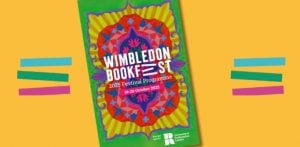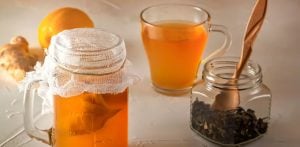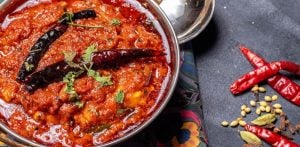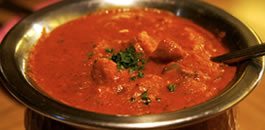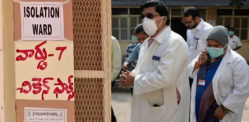Our greatest wealth really is our health
South Asians have a much higher risk of chronic disease. The risk of getting type 2 Diabetes is a staggering 6 times higher than the general population and we are twice as likely to die from heart disease.
Whilst it’s impossible to alter our genetic make up we can improve our lifestyle habits.
There is enormous diversity in cultures, traditions and habits amongst Asian communities in the UK but there are certain dietary practices that persevere despite the detrimental effect they have on our health.
Here are 10 dietary practices that need urgent reform for a healthier you.
1. Fried Food
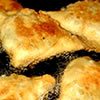 Fried foods feature in many religious celebrations and family gatherings. Occasional consumption of foods such as samosas, pakoras, puris or bhaturas is fine so long as these occasions aren’t every week! Fried foods are calorific and contribute to weight gain. Re-using oil will change its molecular structure likening it to trans fats which have been linked to heart disease.
Fried foods feature in many religious celebrations and family gatherings. Occasional consumption of foods such as samosas, pakoras, puris or bhaturas is fine so long as these occasions aren’t every week! Fried foods are calorific and contribute to weight gain. Re-using oil will change its molecular structure likening it to trans fats which have been linked to heart disease.
Try baking samosas with a little oil brushed over the pastry or use filo pastry instead of shortcrust pastry. Healthier starters are curried chick peas or chopped vegetables.
2. Butter/Ghee
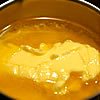 Curries are traditionally cooked in butter or ghee, both of which are saturated fats. Saturated fats are originate from animal products and result in raised cholesterol levels and furred arteries.
Curries are traditionally cooked in butter or ghee, both of which are saturated fats. Saturated fats are originate from animal products and result in raised cholesterol levels and furred arteries.
Replacing butter and ghee with small amounts of polyunsaturated fats such as sunflower or corn oil or monounsaturated fats such as olive or rapeseed oil would be heart protective.
3. Sugar
 Traditional Asian sweetmeats or ‘mithai’ such as jalebi, ladoo, gulab jamun and burfi have alarmingly high levels of fat and sugar whilst offering little nutrition. Traditional sweets are made using sugar, ghee, full cream milk powder, sweet condensed milk and coconut.
Traditional Asian sweetmeats or ‘mithai’ such as jalebi, ladoo, gulab jamun and burfi have alarmingly high levels of fat and sugar whilst offering little nutrition. Traditional sweets are made using sugar, ghee, full cream milk powder, sweet condensed milk and coconut.
Reducing our consumption of sweet snacks and swapping them for more nutritious snacks such as fruit or low fat yoghurts would help save our teeth and waistline.
4. Salt
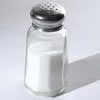 Too much salt in the diet can lead to high blood pressure and increased risk of stroke. Try to limit limit salt intake to less than 6grams a day, which is about a level teaspoon.
Too much salt in the diet can lead to high blood pressure and increased risk of stroke. Try to limit limit salt intake to less than 6grams a day, which is about a level teaspoon.
Simple changes you can make are to gradually reducing salt in cooking, using lo-salt and most importantly limiting the intake of salty snacks and pickles.
5. Large Portions
 Our bodies needs small, nutritious meals to fuel our metabolic processes. Having that ‘stuffed’ feeling at the end of a meal is generally an indicator that we have eaten too much.
Our bodies needs small, nutritious meals to fuel our metabolic processes. Having that ‘stuffed’ feeling at the end of a meal is generally an indicator that we have eaten too much.
Trying to eat slowly over a 20 minute period and chew food for better digestion. Try smaller meals throughout the day instead of large ones. By listening to our body will help regulate portions.
6. Unbalanced Meals
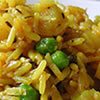 The combination of potato with other starchy foods such as chapatti, rice, puri or naan can lead to an unbalanced diet. Our body needs a variety of vitamins and minerals to help it function efficiently.
The combination of potato with other starchy foods such as chapatti, rice, puri or naan can lead to an unbalanced diet. Our body needs a variety of vitamins and minerals to help it function efficiently.
Try to balance meals with one third carbohydrates such as chapatti, rice or potato, one third protein such as lentils, pulses, meat, fish or eggs and one third vegetables or salad. This balance will give the body the much needed nutrition it craves.
7. Snacks
 Fried snacks such as chevda, ganthia, sev, crisps and salted nuts are not only fried but also heavily salted. Grazing on these snacks will make it very difficult to monitor how much is eaten.
Fried snacks such as chevda, ganthia, sev, crisps and salted nuts are not only fried but also heavily salted. Grazing on these snacks will make it very difficult to monitor how much is eaten.
Reducing the quantity and frequency of these snacks will help reduce calories and salt.
8. High Calorie Drinks
 Sugary drinks such as sweet lassi, sweetened mango juice, Indian tea and energy drinks are often overlooked as a source of calories. A small carton of seemingly healthy fruit juice can contain as much as 12 cubes of sugar!
Sugary drinks such as sweet lassi, sweetened mango juice, Indian tea and energy drinks are often overlooked as a source of calories. A small carton of seemingly healthy fruit juice can contain as much as 12 cubes of sugar!
Not only will this affect dental health but extra calories will be stored as fat. Opt for plain water and keep fizzy drinks, squashes and juice drinks to a minimum.
9. Dairy Foods
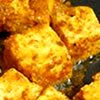 The belief that full fat dairy products are more nutritious and calcium rich still persists. Lower fat milks actually have slightly more calcium than the full fat alternative. The fat contained in dairy is largely saturated fat.
The belief that full fat dairy products are more nutritious and calcium rich still persists. Lower fat milks actually have slightly more calcium than the full fat alternative. The fat contained in dairy is largely saturated fat.
Choosing lower fat milk and yoghurt whilst limiting paneer (cheese) consumption will reduce overall saturated fat intake.
10. Alcohol
 Alcohol is high in calories, affects our blood sugar levels and acts as a appetite stimulant. Men should try to stick to 3-4 units per day and women 2-3 units per day. One unit is a half pint or a single spirit measure.
Alcohol is high in calories, affects our blood sugar levels and acts as a appetite stimulant. Men should try to stick to 3-4 units per day and women 2-3 units per day. One unit is a half pint or a single spirit measure.
Weekend binge drinking is common in the Asian community. Try replacing every other alcoholic drink with diet soft drinks or water.
Habits can be difficult to change but the important step is to start making changes today no matter how small. Our greatest wealth really is our health and its is our choice whether we protect what we have. If we look after our bodies now they will look after us in the future.
The key message with all of these dietary practices is moderation.
As with everything in life if we balance the different elements of our diet our bodies can cope. We are creatures of habit and continue along the path that we find most comfortable and familiar.
However, if you do have health problems such as high blood pressure, cholesterol, diabetes or heart disease making simple swaps as suggested above will have a huge impact on your health. Start with small, realistic changes that you can sustain over time rather than trying to change too much and giving up in despair.
The South Asian community are starting to realise the benefits of healthy eating but why wait until we are plagued with disease before we take it seriously?


